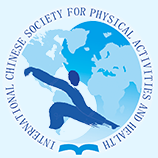Document Type
Abstract
Publication Date
12-1-2024
Abstract
Background/Purpose of the study: In recent years, high-intensity interval training (HIT) has been used mainly by elite athletes as a training method, but little attention has been paid by the scientific community to the fact that HIT can be used as an effective training method to enhance aerobic performance indices. Therefore, this study hypothesized that HIT would enhance respiratory muscle strength and expiratory flow compared to endurance training (ET). This study also aimed to characterize the effects of HIT on the pulmonary system in order to increase scientific and athletic attention to the effects of high-intensity interval training on aerobic performance.
Method: The study recruited 20 (9 females, 11 males; Mage = 18.4) physically active, healthy student subjects (untrained) from a university in China who were randomly assigned to either the ET group (n = 10) or the HIT group (n = 10). All subjects underwent a tiredness increment test (VO2max) on a treadmill ergometer before and after training. Standard pulmonary function tests, maximal inspiratory pressure (PImax), maximal expiratory pressure (PEmax), and maximal flow loops were performed before and after training. HIT subjects performed a 4-week training program 4 days per week on a treadmill ergometer at 90% of the final workload of VO2max, whereas ET subjects worked out at 60% of VO2max. The HIT group performed five 2-minute rounds with a 3-minute recovery period, and the ET group performed 45 minutes of consecutive circuits. A two-kilometer time trial (TT) was performed before, after, and upon completion of training.
Outcome: Data were analyzed using SigmaStat statistical software and expressed as mean ± standard deviation. Differences were determined using a 2 × 2 (group vs. time) mixed ANOVA. Tukey post hoc tests were used to determine significant interaction effects. After training, both groups improved VO2max (~7-10%) and TT (HIT 6.5±1.3%, ET 5.1±1.8%) (P < 0.05), but there was no differences between the two groups (P > 0.05). PImax (ET~25%, HIT~43%) increased in both training groups, and HIT values were significantly higher than ET, and there was no change in expiratory flow rate in both training groups (P > 0.05).
Conclusion: It was found that although HIT did not have a significant effect on expiratory flow rate, it had beneficial effects on respiratory muscle strength, which may help to minimize pulmonary limitations on exercise performance. This form of training provides a time-saving alternative to traditional endurance training and produced similar benefits.
DOI
https://doi.org/10.18122/ijpah.3.3.43.boisestate
Recommended Citation
Sun, Yanzhao
(2024)
"A043: Effect of High-Intensity Interval Training on Lung Function in College Athletics Teaching,"
International Journal of Physical Activity and Health: Vol. 3:
Iss.
3, Article 43.
DOI: https://doi.org/10.18122/ijpah.3.3.43.boisestate
Available at:
https://scholarworks.boisestate.edu/ijpah/vol3/iss3/43
Included in
Exercise Science Commons, Health and Physical Education Commons, Public Health Commons, Sports Studies Commons



